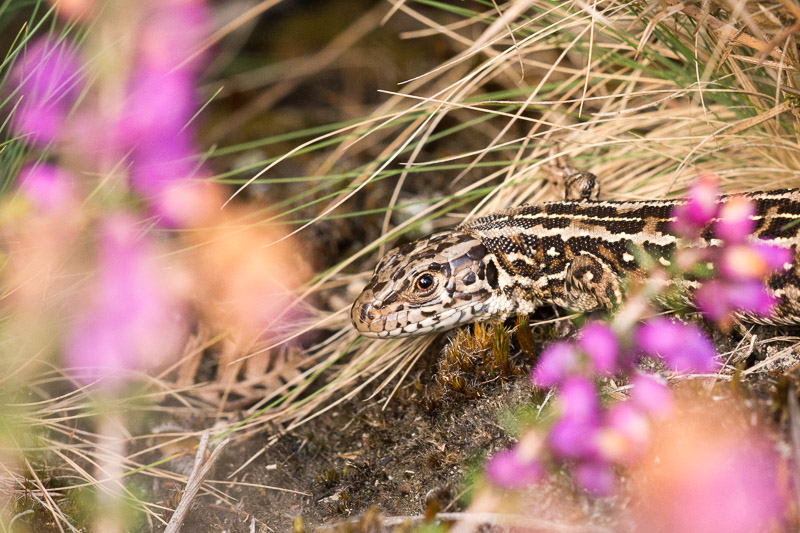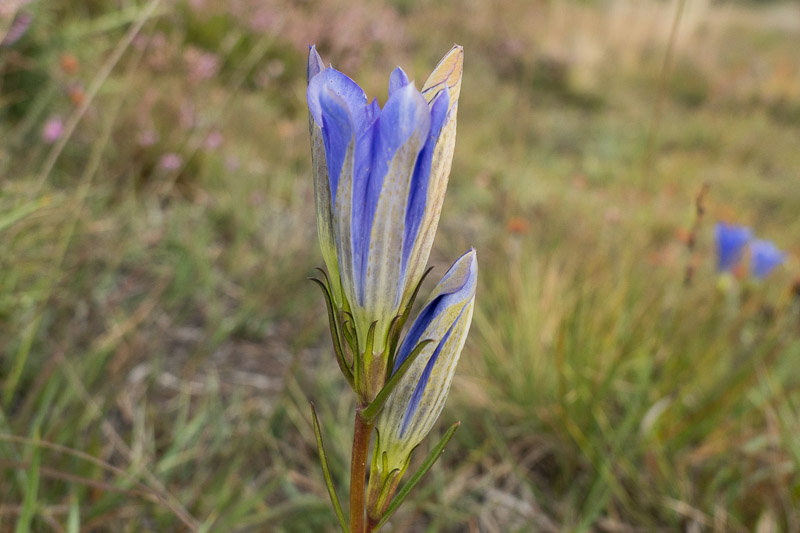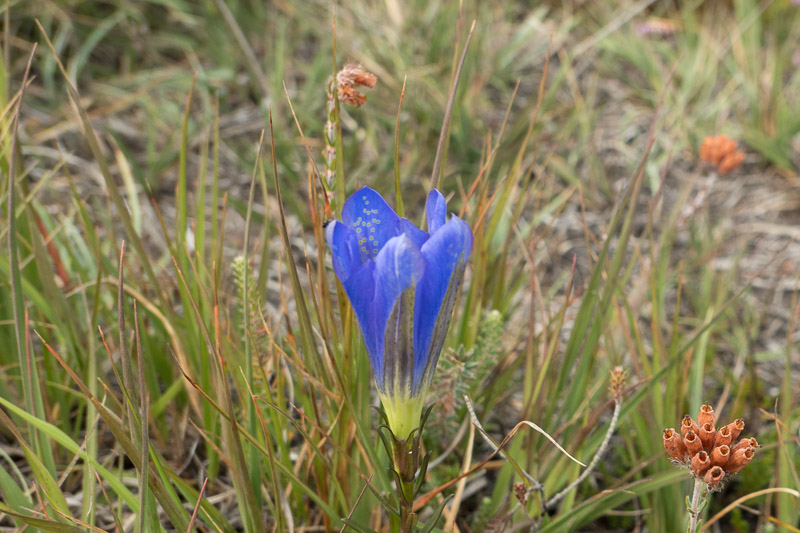
Sand Lizard, catching a few rays of afternoon sunshine at Studland Heath, Dorset
Although Studland is renowned as being the best place in the country for Sand Lizards a sighting of Britain’s rarest reptile is far from guaranteed. Their cryptic markings are a superb camouflage and unless they decide to move they can remain hidden for long periods. This one appeared out of nowhere whilst I was lying down trying to find a suitable angle for a half decent photo of the Marsh Gentians.

After a few minutes basking in the warmth of the sun a cloud moved across and the Sand Lizard turned around and vanished back into the heath.

Marsh Gentian
One of several to be found flowering close to the edge of the bog.

Being low growing plants and typically surrounded by taller grasses and heather I’ve always found the Gentians a bit awkward to photograph.
In the first photograph I used a 150mm lens to isolate the flower from the background and whilst successful my preference with wild plants is to show a bit of context and the plant growing in its natural habitat. Fortunately this is something that the Panasonic LX10 is particularly well suited for.

Another Marsh Gentian taken from a more upright position 🙂
The white spots on the inside of the petals are used by Bees and other insects to help guide them to the stigma deep inside the flower.

Oblong-leaved Sundew, also known as Intermediate leaved Sundew

English Sundew – the large straplike leaves are simply unmistakable.
Interestingly to note that when an insect has been caught the whole leaf rolls up around the unfortunate victim. No chance of escape !

Another English Sundew.

Fork-leaved Sundew – a North American species that really shouldn’t be here.
Since I first noticed it 4 years ago it doesn’t appear to have spread and fortunately no sign of any seedlings within the immediate area.

Plenty of Dragonflies to be found with this one being caught up in a single strand of a spider’s web.
Some great photos. The Fork-leaved Sundew is apparently an Australian (also NZ) species rather than North American.- I didn’t realise it was here.
For many years we had a small population of Sarracenias in a small area of Chobham Common, surrey, which didn’t seem to spread much but were eventually removed by English Nature. a shame really as they weren’t a problem here + gave some extra interest.